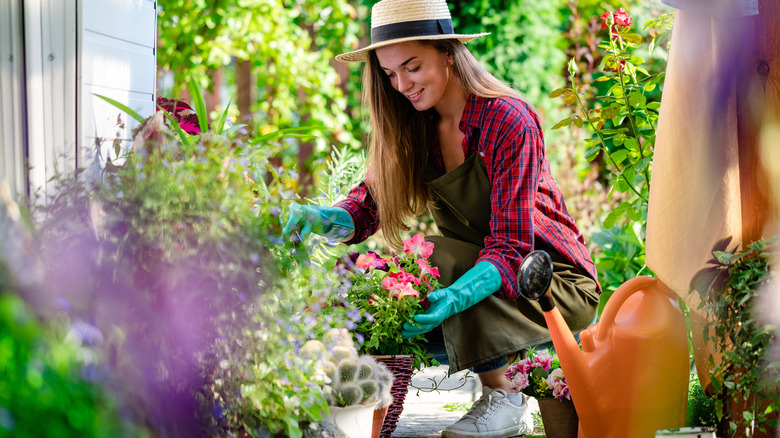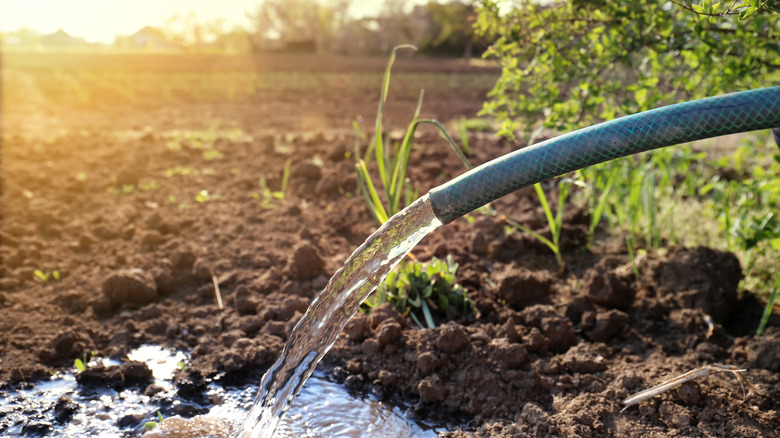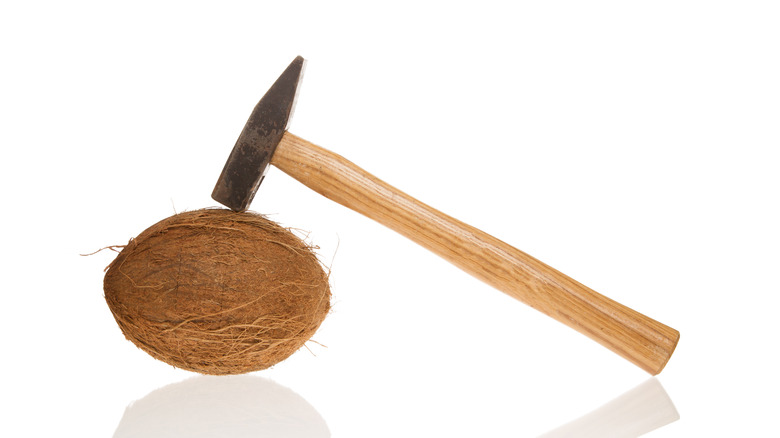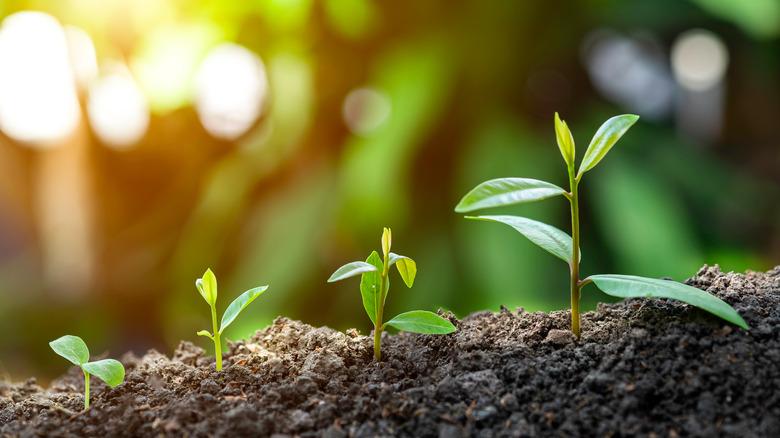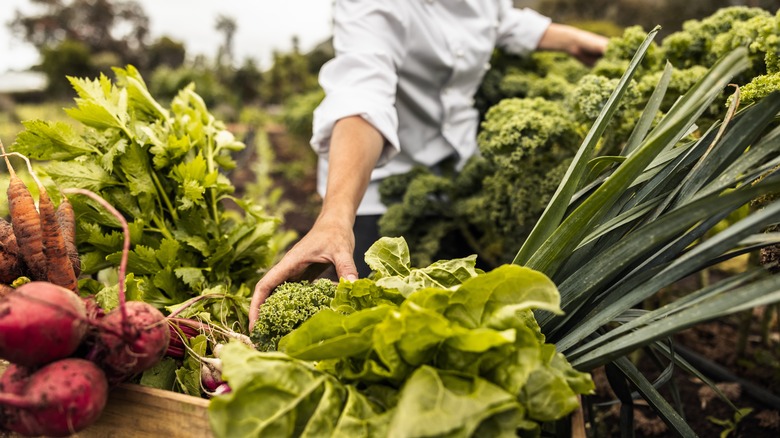What Is Seed Germination And What Does It Mean For Your Garden
Take a look outside. Every plant that you see began as nothing more than a tiny seed, and somehow that tiny seed was able to grow into the beautiful and magnificent plants you see around you. But how does this happen? How can a seed, some no bigger than a fingernail, grow into these beautiful and magnificent plants? The process is called germination, which encompasses the developmental stages a seed undergoes in order to become a plant. Although the length and complexity of germination may differ from plant to plant, the stages remain somewhat the same, according to Study.com.
Understanding germination can help you better understand and grow new plants in your garden at home. Even if you've never gardened before, knowing this process plants go through can give you confidence in starting your own garden whether it's from the seeds you buy at the store or simply the seed you find in your fruits and vegetables at home. With this, you can also determine how to continue your plant production and improve the yield and quality of the plants you grow at home in the years to come (per Garden Betty).
Factors of seed germination
The growth and development of a seed is a natural process, but just like humans need the right conditions to properly grow and develop, so do plants. For a seed to germinate, it relies on four major factors: moisture, oxygen, temperature, and soil depth, according to Gardening Know How.
Out of all these factors, moisture is the most important to consider. A seed needs water to break its dormancy, but keep in mind that too much moisture can be bad for the seed, too. The soil should be moist but not soaked. To allow for easy access to oxygen, another crucial factor of germination, the soil should also not be packed too tightly around the seed. Too much soil on top of the seed can also affect its ability to receive oxygen. Temperature varies from plant to plant; therefore, be mindful of the seeds you have and the temperature at which you need to plant them. Soil depth also varies depending on the seed. If bought from the store, the seed's package should include their depth information, but generally, larger seeds need more depth to properly root.
Breaking a seed's dormancy
Before germination, some seeds undergo a period of dormancy. Dormancy is a delay in the germination of a plant due to harsh conditions that prevent the plant from growing right away, according to Garden Fundamentals. Specifically, this is a protective response that prevents the seed from sprouting in the wrong conditions, which could lead to their quick death. Breaking dormancy may range in complexity, but most plants just need the right conditions to begin germination.
Better Homes & Gardens mentions that moisture alone can be enough to break the dormancy of some simple seeds. A chilling period with moisture may also be needed in other circumstances, which is known as stratification. In some circumstances, scarification may also need to be used. This term means to physically break open the outer seed coating, which can be done with a knife or a piece of sandpaper. Keep in mind most seeds need a specific temperature to germinate; therefore, consider the temperature, moisture, and the means of breaking dormancy as a whole for the best results.
Helping seeds germinate faster
Depending on the type of plant, the germination process of a seed can be long and anxious. There are some tricks, however, that you try that can potentially speed up the process. One trick that gardeners swear by is the use of paper towels, which can germinate seeds three times faster than normal. For this trick, start by placing a folded paper towel at the bottom of a glass or plastic container and add water until the towel is damp. Ensure that there are no puddles or excess water because there should only be enough water to dampen the paper towel. Place the seeds on the paper towel and close the lid of the container. Keep the container out of direct sunlight to avoid extra heat from collecting in the container. This extra heat could potentially fry your seeds. Check your seeds daily because some may only take two to three days to sprout, according to Homesteading Where You Are.
Presoaking is another technique that works when wanting the speed up the germination process of your seeds. This technique works by simply letting your seeds soak in a glass of water. Ensure the seeds don't soak more than twenty-four hours to avoid rotting and always plant the seeds directly after soaking. The water acts as a penetrant to the seed coating as the embryo inside the seed begins to grow and develop, allowing an easy breakthrough.
What are the easiest seeds to germinate
Especially when you are a first-time gardener, growing plants from scratch may feel like a difficult and overwhelming process. But instead of giving up and purchasing a plant that has already grown from the store, there are some easy-to-start seeds you can try for your first gardening attempt.
If you're looking to start an easy edible garden, Treehugger recommended starting with beans, cucumbers, radishes, carrots, squash, lettuce, or chard. Not only are these starter plants nutritious when brought from your garden to your kitchen, but they can also grow your confidence as a gardener. Some other easy additions to your garden can include cosmos, sunflowers, poppies, marigolds, zinnias, bachelor buttons, cleome, runner beans, or nasturtiums. Although these other options do not have much use in your kitchen, they can light up your garden with colors and a wide variety of fresh scents. Instead of buying pricey cut flowers from the store, you can also use these easy garden additions to make your own beautiful floral bouquets that can be shared with friends and family.
